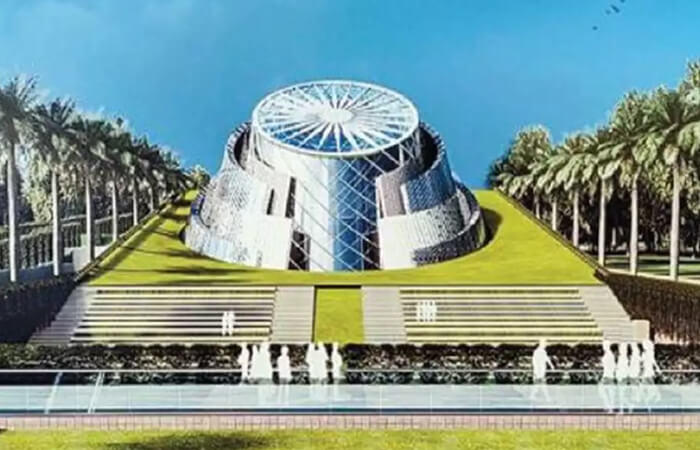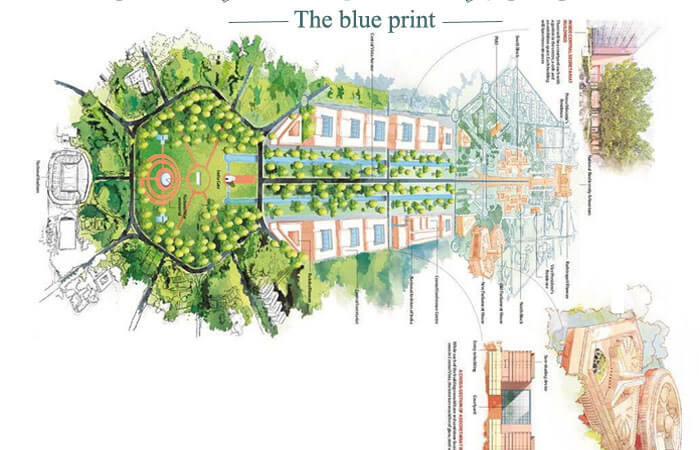Bharatmala Project | Bharatmala Pariyojana
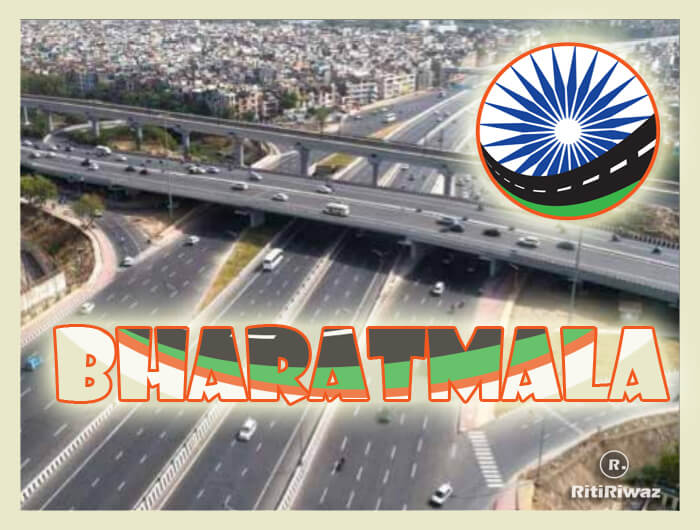
Bharatmala Project or Bharatmala Pariyojana is one of the biggest highway construction project in India which will boost highway infrastructure of the country. The project is the second largest highway construction project in the country after National Highways Development Project (NHDP).
Bharatmala Pariyojana was launched on 2017 focuses on optimizing the efficiency of road traffic movement across the country by bridging critical infrastructure gaps. It aims to improve the connectivity, especially along the economic corridors, border regions and far-flung areas.
The National Highways Development Program (NHDP) has reached a certain level of maturity. It is now important to re-define road development and have a macro approach while planning expansion of the national highways network. To date, point to point connectivity has been the rationale for highway construction; highways development has not been planned with an economic perspective.
It is required, therefore, that the Origin and Destination of vehicular traffic, particularly of freight, be the basis of construction for the bigger i.e. 4-laning/6-laning National Highways (NHs). Hence it was proposed to launch a new umbrella program with the primary focus of optimizing the efficiency of the movement of goods and people across the country.
The objective of the Bharatmala Pariyojana program is to optimize the efficiency of freight and passenger movement across the country by bridging critical infrastructure gaps through development of Economic Corridors, Inter Corridors and Feeder Routes, National Corridor Efficiency improvement, Border and International connectivity roads, Coastal and Port connectivity roads and Green-field expressways.
“India needs great road infrastructure – Bharatmala is building thousands of kilometers of roads for it”. – PM Narendra Modi
Six Key Features of the scheme
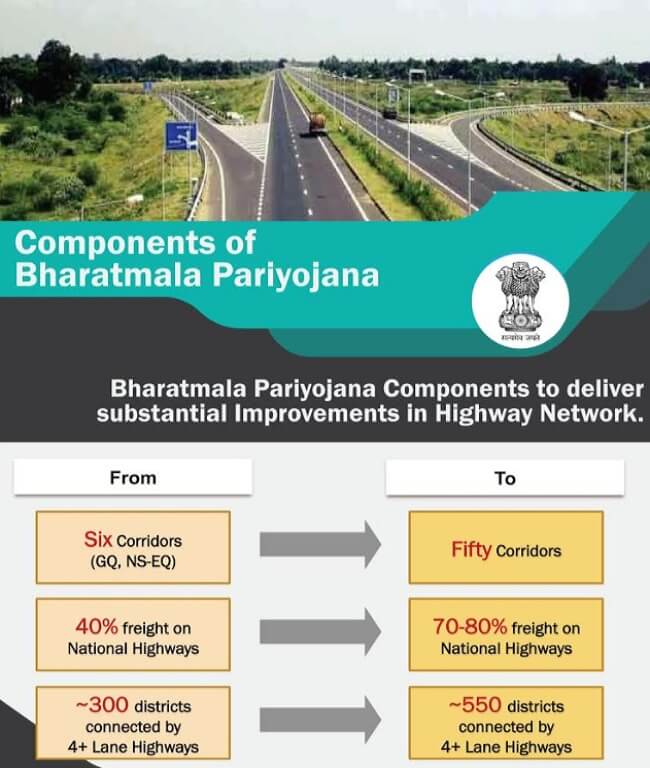
-
Economic Corridors: Integrating the economic corridors facilitates larger connectedness between economically important production and consumption centers.
-
Inter-corridor and Feeder routes: Intercorridor connectivity would ensure first mile and last mile connectivity.
-
National Corridor Efficiency Improvement: Through this, the greater actionable goal is to undertake lane expansion and decongestion of existing National Corridors.
-
Border and International connectivity Roads: Better border road infrastructure would ensure greater maneuverability, while also boosting trade with neighboring countries.
-
Coastal and Port connectivity roads: Portled economic development is further boosted through connectivity to coastal areas, encouraging both, tourism and industrial development.
-
Green-field Expressways: Expressways with higher traffic congestion and choke points would benefit from green field expressways.
The Bharatmala Pariyojana envisages a corridor approach in place of the existing package- based approach which has, in many cases, resulted in skewed development. For instance, in areas of high traffic, even upto 30,000 Passenger Carrying Units (PCUs), there are National Highway stretches of single and even intermediate lane. These have naturally become an impediment to seamless freight and passenger movement.
The Bharatmala Pariyojana, once implemented, is expected to result in connecting 550 Districts in the country through NH linkages. Currently, around 300 Districts have NH connectivity. The bridging of critical infrastructure gaps in existing highway network would enhance safe and seamless movement of traffic, and in turn have a positive impact on the Logistic Performance Index (LPI) of the country.
The main agencies tasked with the construction are the National Highways Authority of India, National Highway and Industrial Development Corporation and state public works departments.
Expressways to be built under Bharatmala Pariyojana Phase-I
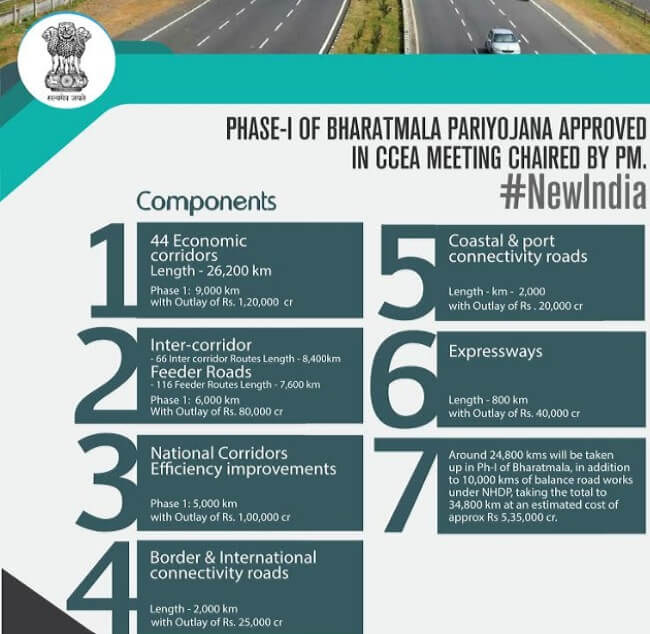
Cabinet Committee on Economic Affairs (CCEA) has approved the Bharatmala Pariyojana Phase-I. Under Bharatmala Pariyojana Phase-I the 9,000 km long corridor has been envisaged for implementation. Under this phase total 550 districts out of total 718 districts will be connected to National Highway (NH). A total of around 34,800-km of roads at an investment of over Rs 5.35 lakh crores would be constructed by 2022.
Under the Bharatmala Pariyojana Phase-I, the government will develop the following expressways as well as access controlled corridors:
-
Delhi-Vadodara Expressway
-
Vadodara-Mumbai Expressway
-
Delhi-Faridabad-Sohna
-
Ahmedabad-Dholera Expressway
-
Delhi-Amritsar-Katra Expressway
-
Bengaluru-Chennai Expressway
-
Kanpur-Lucknow Expressway
-
Ambala-Kotputli Corridor
- Chennai-Salem Corridor
-
Amritsar-Bhatinda-Jamnagar Corridor
-
Durg-Raipur-Arang Corridor
-
Raipur-Vishakhapatnam Corridor
-
Chitoor-Thatchur Corridor
-
Urban Extension Road II
-
Delhi-Dehradun Corridor
-
Bengaluru-Satellite Ring Road
-
Surat-Ahmednagar Solapur
-
Solapur-Kurnool Corridor
-
Kharagpur-Siliguri Corridor (Till Morgram)
-
Indore-Hyderabad Corridor
-
Hyderabad (Suryapet)-Vishakhapatnam (Devarpalle) Corridor
-
Kota–Indore (Garoth – Ujjain) Corridor
-
Hyderabad-Raipur Corridor
-
Nagpur-Vijayawada Corridor


